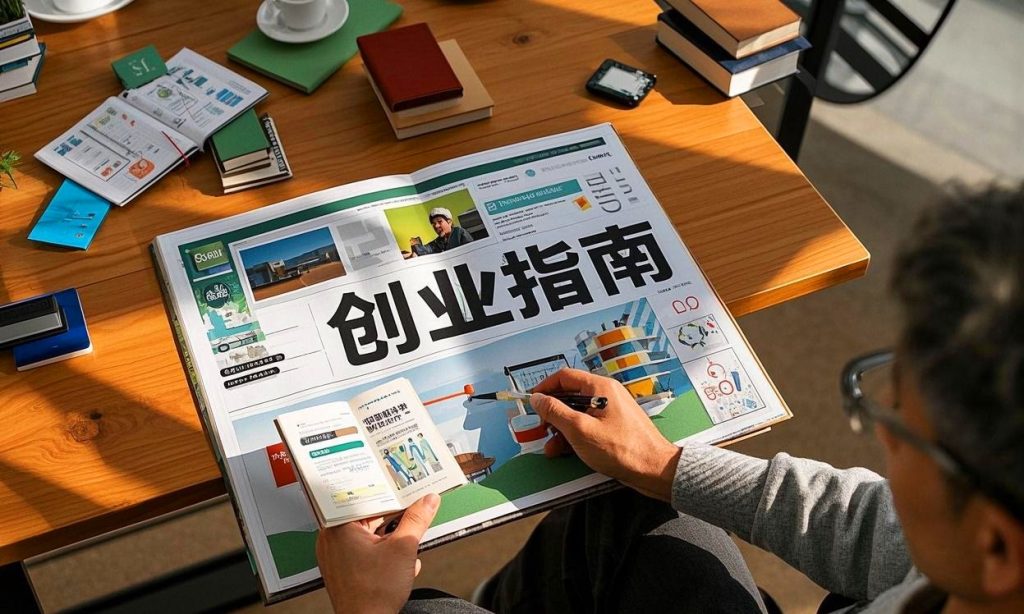
The Era of “Economy of Savings”: Five Critical Lines for Enterprise Transformation in 2025
Introduction: Solving the Puzzle of the “Economy of Savings”
In 2025, the global economic landscape is undergoing profound changes. With resource shortages, rising costs, and changing consumer demands, the “Economy of Savings” has become the core proposition for enterprises’ survival and development. This concept not only refers to cost – saving but also emphasizes achieving sustainable growth through efficient operations, technological innovation, and resource optimization.
For enterprises, transformation is no longer an option but a matter of life and death. How can enterprises find a path for survival and development in the era of the “Economy of Savings”? This article will analyze the five critical lines for enterprise transformation in 2025 around this theme and provide practical suggestions and classic cases.
Critical Line 1: Intelligent Cost Control
Root of the Problem
Traditional cost – control methods can no longer cope with the rapidly changing market environment. Enterprises need to shift from “passive cost – saving” to “active optimization,” and intelligent technologies are the key to achieving this goal.
Solutions
- Introduce AI – driven cost – analysis tools: Use big data and artificial intelligence to monitor enterprise operating costs in real – time and identify areas of waste.
- Automate processes: Reduce manual intervention, lower error rates, and save time costs.
- Optimize the supply chain: Use blockchain technology to improve supply – chain transparency and reduce intermediate links.
Supplementary Case
Amazon has significantly reduced logistics costs through its intelligent warehousing system and robot technology. Its Kiva robots can work 24 hours a day, shortening the order – processing time to 15 minutes and significantly improving efficiency.
Critical Line 2: Efficient Recycling and Utilization of Resources
Root of the Problem
Resource waste not only increases costs but also affects an enterprise’s ESG (Environmental, Social, and Governance) performance. In the future, enterprises must integrate the concept of the “circular economy” into their operations.
Solutions
- Design recyclable products: Consider recycling and reuse from the product – design stage.
- Establish a resource – recycling network: Cooperate with upstream and downstream enterprises to form a closed – loop supply chain.
- Digitally manage resources: Track the flow of resources through the Internet of Things (IoT) technology to optimize usage efficiency.
Supplementary Case
IKEA has reduced resource waste and opened up new revenue streams through its “furniture rental” and “second – hand recycling” programs, which refurbish and resell old furniture.
Critical Line 3: Flexible Employment and Talent Optimization
Root of the Problem
The fixed employment model is costly and lacks flexibility. In the future, enterprises need more flexible employment methods to cope with market fluctuations.
Solutions
- Adopt a hybrid employment model: Combine full – time, part – time, and outsourcing to reduce labor costs.
- Provide skills retraining: Use online learning platforms to enhance employees’ skills to meet new requirements.
- Normalize remote work: Reduce office – space expenses and improve employee satisfaction.
Supplementary Case
Freelance platforms such as Upwork provide flexible employment solutions for enterprises. Many technology companies have quickly assembled project teams through such platforms, saving the costs of long – term employment.
Critical Line 4: Precise Targeting in Digital Marketing
Root of the Problem
Traditional marketing is costly, and its effects are difficult to quantify. Digital marketing can precisely reach target users and improve conversion rates.
Solutions
- Create data – driven user profiles: Analyze user behavior through AI to formulate personalized marketing strategies.
- Leverage social media and short – video marketing: Use low – cost, high – reach channels.
- Automate advertising placement: Reduce manual intervention and improve placement efficiency.
Supplementary Case
Nike has successfully reduced its marketing costs by 30% through digital marketing and social – media interaction while enhancing its brand influence.
Critical Line 5: Asset – light Operation Model
Root of the Problem
The heavy – asset model ties up a large amount of capital and increases the burden on enterprises. The asset – light operation model allows for quick adjustment of business directions and reduces risks.
Solutions
- Outsource non – core business: Focus on core competencies and outsource other business operations.
- Adopt the sharing – economy model: Reduce costs by sharing resources.
- Offer subscription – based services: Provide a stable long – term revenue source and reduce one – time investments.
Supplementary Case
Netflix has achieved rapid expansion through its asset – light content – distribution model, avoiding the high production costs of traditional film and television companies.
Conclusion: Transformation Is the Only Option for Survival
In the era of the “Economy of Savings” in 2025, enterprises must face these five critical lines head – on. Whether it is cost control, resource utilization, employment models, or marketing strategies, enterprises need to break free from traditional thinking and embrace innovation and change. Only enterprises that take the initiative to transform can remain invincible in the fierce competition.
As Jeff Bezos, the founder of Amazon, said: “In a changing world, the only constant is change itself.” Enterprises need to adopt an open mindset and take agile actions to meet future challenges.
“省出来的经济”时代:2025年企业转型的5个生死线|创始人Q&A
- Startup Commentary”Building LLMs: The Knowledge Graph Foundation Every AI Project Needs”
- Startup Commentary”The 17th Year of Tmall Double 11 and the New Map Rewritten by AI”
- Startup Commentary”How to Prepare Your Data for Artificial Intelligence”
- Startup Commentary”Small and Medium-sized Banks: “Cutting the Tail” in Loan Assistance”
- Startup Commentary”The Six AI Giants on Stage: AGI Is No Longer a “Future” Thing”



